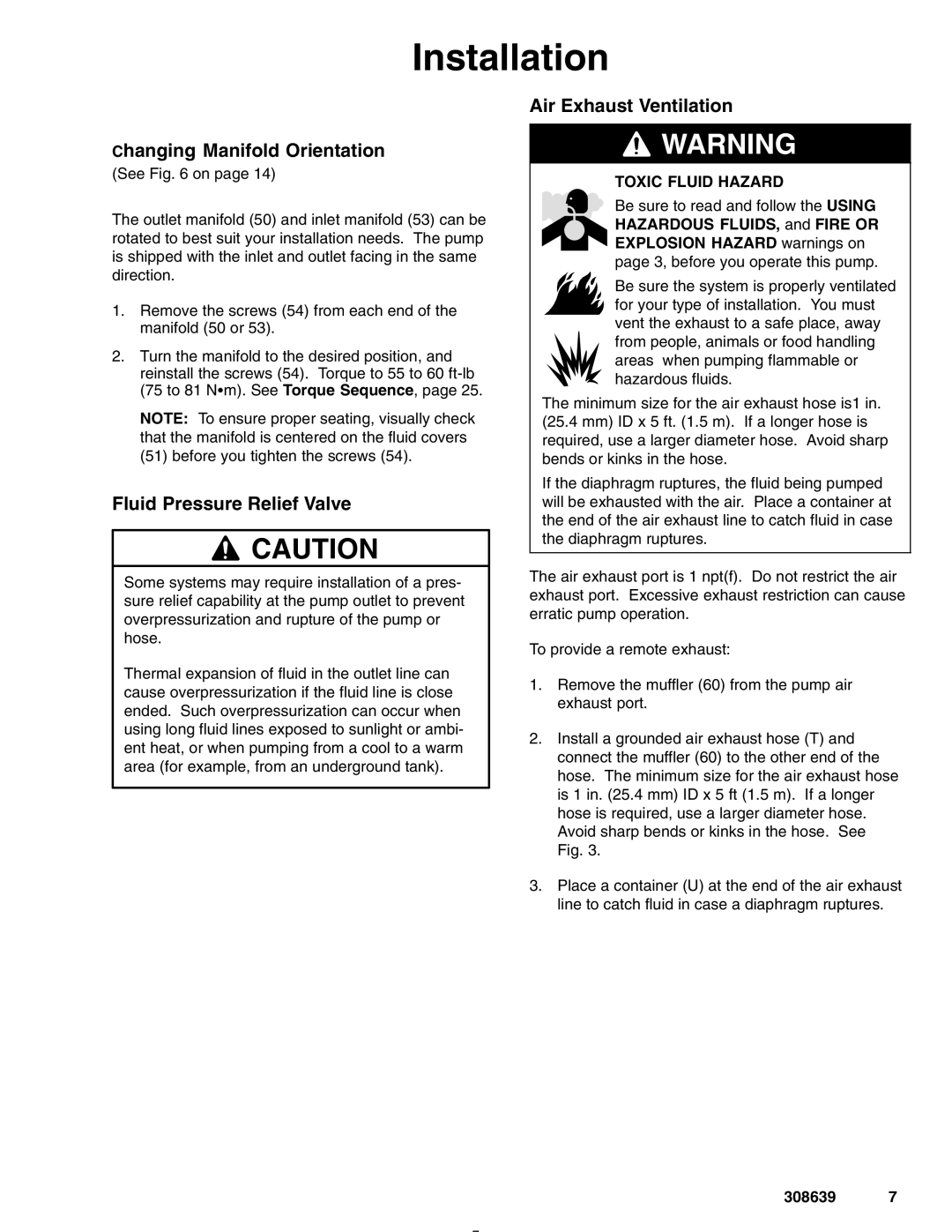
Installation
Changing Manifold Orientation
(See Fig. 6 on page 14)
The outlet manifold (50) and inlet manifold (53) can be rotated to best suit your installation needs. The pump is shipped with the inlet and outlet facing in the same direction.
1.Remove the screws (54) from each end of the manifold (50 or 53).
2.Turn the manifold to the desired position, and reinstall the screws (54). Torque to 55 to 60
NOTE: To ensure proper seating, visually check that the manifold is centered on the fluid covers (51) before you tighten the screws (54).
Fluid Pressure Relief Valve
![]() CAUTION
CAUTION
Some systems may require installation of a pres- sure relief capability at the pump outlet to prevent overpressurization and rupture of the pump or hose.
Thermal expansion of fluid in the outlet line can cause overpressurization if the fluid line is close ended. Such overpressurization can occur when using long fluid lines exposed to sunlight or ambi- ent heat, or when pumping from a cool to a warm area (for example, from an underground tank).
Air Exhaust Ventilation
![]() WARNING
WARNING
TOXIC FLUID HAZARD
Be sure to read and follow the USING HAZARDOUS FLUIDS, and FIRE OR EXPLOSION HAZARD warnings on page 3, before you operate this pump.
Be sure the system is properly ventilated for your type of installation. You must vent the exhaust to a safe place, away from people, animals or food handling areas when pumping flammable or hazardous fluids.
The minimum size for the air exhaust hose is1 in. (25.4 mm) ID x 5 ft. (1.5 m). If a longer hose is required, use a larger diameter hose. Avoid sharp bends or kinks in the hose.
If the diaphragm ruptures, the fluid being pumped will be exhausted with the air. Place a container at the end of the air exhaust line to catch fluid in case the diaphragm ruptures.
The air exhaust port is 1 npt(f). Do not restrict the air exhaust port. Excessive exhaust restriction can cause erratic pump operation.
To provide a remote exhaust:
1.Remove the muffler (60) from the pump air exhaust port.
2.Install a grounded air exhaust hose (T) and connect the muffler (60) to the other end of the hose. The minimum size for the air exhaust hose is 1 in. (25.4 mm) ID x 5 ft (1.5 m). If a longer hose is required, use a larger diameter hose. Avoid sharp bends or kinks in the hose. See Fig. 3.
3.Place a container (U) at the end of the air exhaust line to catch fluid in case a diaphragm ruptures.
